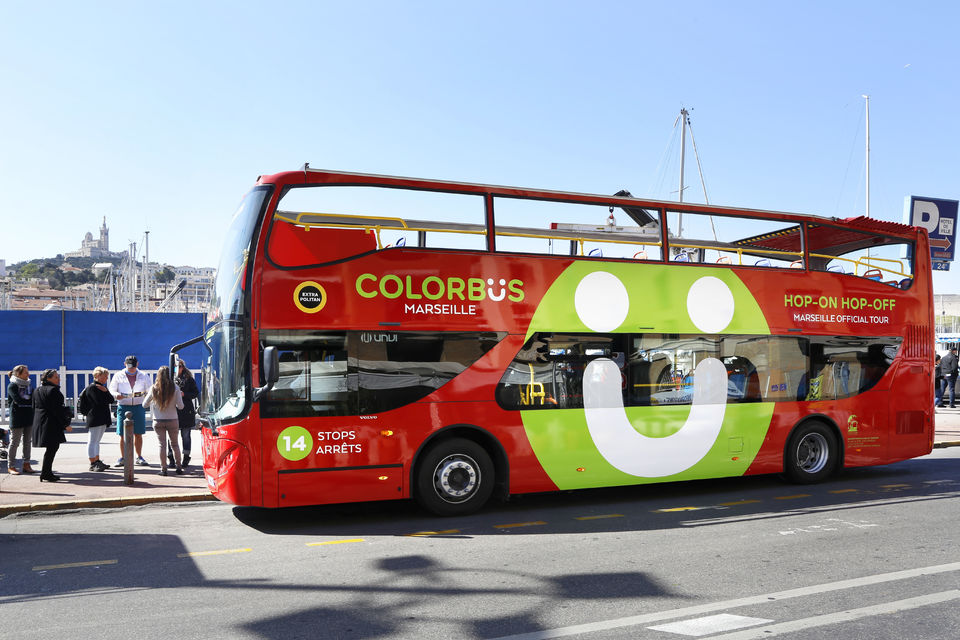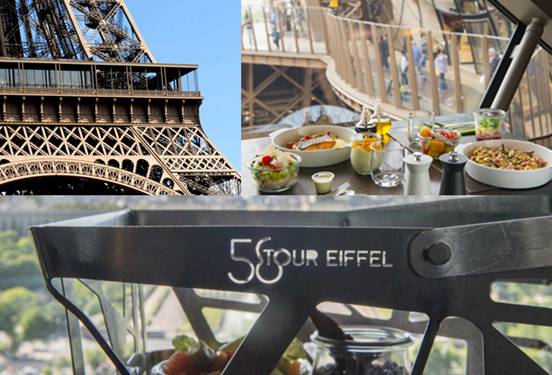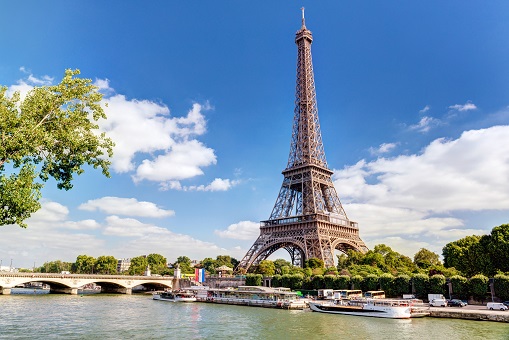An Art and History Loop from Paris: Barbizon, Fontainebleau, and Vaux-le-Vicomte
This multi-day itinerary takes you on a journey from the heart of Paris to the serene Forest of Fontainebleau, exploring the cradle of landscape painting, a majestic royal palace, and a château that inspired Versailles. It's a perfect blend of art, nature, and French history.
Trip Overview
This loop is best experienced over 2-3 days to fully appreciate each location without feeling rushed. The recommended route is:
Day 1: Travel from Paris to Barbizon. Explore the village and the forest. Overnight in the Fontainebleau area.
Day 2: Spend the day exploring the Château de Fontainebleau and its gardens.
Day 3: Visit the Château de Vaux-le-Vicomte in the morning/afternoon, then return to Paris.
Getting Around: The most flexible way to complete this itinerary is by rental car. This allows you to easily travel between sites, access remote parts of the forest, and manage luggage. Public transport is possible but requires careful planning with trains and local taxis.
Barbizon: The Village of the Painters
Nestled at the edge of the vast Forest of Fontainebleau, Barbizon is a charming village that became the epicenter of the Barbizon School, a pre-Impressionist art movement in the mid-19th century. Artists like Jean-François Millet, Théodore Rousseau, and Camille Corot rejected idealized studio painting and came here to paint nature
en plein air (outdoors), directly from life.
Historical & Cultural Significance
Before the 1830s, Barbizon was a simple stopover for travelers. The arrival of painters transformed it into a thriving artistic colony. They were drawn by the unique light, the ancient trees, and the dramatic rock formations of the forest. Their work, focusing on rural realism and the raw beauty of nature, paved the way for the Impressionists.
Key Attractions
Auberge Ganne: Now the Musée de l'École de Barbizon, this was the primary inn where the painters lived and worked. You can see their original rooms, complete with drawings and sketches they made directly on the walls.
Millet's Studio: Visit the separate house and studio where Jean-François Millet lived and created his masterpieces, including preliminary studies for "The Gleaners."
The Main Street (Rue Grande): Lined with art galleries, charming cafés, and souvenir shops, this street retains its 19th-century atmosphere.
The Forest of Fontainebleau: Step directly from the village into the forest. Follow marked paths to find famous painting spots like the Gorges d'Apremont and the Rocher du King of Rome.
Practical Travel Information
Getting There from Paris:
By Car: Take the A6 motorway towards Lyon, exit at "Fontainebleau," and follow signs to Barbizon. Journey time is about 1 hour.
By Public Transport: Take a train from Gare de Lyon to Melun (faster) or Fontainebleau-Avon. From either station, you will need a taxi for the final 15-minute journey to Barbizon.
Suggested Duration: 4-6 hours.
Admission: A combined ticket is available for the Musée de l'École de Barbizon and Millet's Studio.
Dining: Enjoy a meal at one of the traditional inns (auberges) on Rue Grande for an authentic experience.
Château de Fontainebleau: The True Home of Kings
A UNESCO World Heritage site, the Château de Fontainebleau is not just one castle but a sprawling complex of royal buildings that evolved over eight centuries. Unlike Versailles, which was largely the vision of one king (Louis XIV), Fontainebleau bears the imprint of many, from François I and Napoleon Bonaparte to Napoleon III.
Historical & Cultural Significance
Fontainebleau was a favorite residence for French monarchs because of its excellent hunting grounds. François I imported Italian Renaissance artists in the 16th century to decorate the palace, creating the First School of Fontainebleau, which profoundly influenced French art. Napoleon later referred to Fontainebleau as "the house of the centuries," and it was here that he abdicated in 1814.
Key Attractions
The Renaissance Rooms (François I Wing): Don't miss the iconic François I Gallery, a masterpiece of Mannerist art with stunning frescoes and stucco work by Rosso Fiorentino.
The Throne Room: Fontainebleau is the only royal palace to have a throne room that remains in its original setting.
The Napoleonic Apartments: See the beautifully restored rooms of Emperor Napoleon I and Empress Joséphine, including his council chamber and her bedchamber.
The Ballroom (Salle de Bal): A magnificent, large room built under Henri II, used for lavish parties and ceremonies.
The Gardens and Park: Explore the formal Grand Parterre (the largest in Europe), the picturesque Carp Pond (Étang des Carpes), and the sprawling English-style garden.
Practical Travel Information
Getting There from Barbizon:
By Car: A short 10-15 minute drive through the forest.
By Public Transport: Requires a taxi from Barbizon to the château.
Suggested Duration: A full day.
Admission: Tickets can be purchased for the main chambers ("Grands Appartements") or a combined ticket that includes the Napoleon museums. Book online to skip queues.
Tours: Audio guides are highly recommended. Guided tours in English are available for specific areas.
Amenities: There are several cafés and a formal restaurant within the château grounds, as well as picnic areas in the park.
Château de Vaux-le-Vicomte: The Tragic Masterpiece
The Château de Vaux-le-Vicomte is a masterpiece of 17th-century architecture and landscape design. It was built for Nicolas Fouquet, the Superintendent of Finances for Louis XIV, by a dream team: architect Louis Le Vau, painter-decorator Charles Le Brun, and landscape gardener André Le Nôtre.
Historical & Cultural Significance
The château's inauguration in 1661 was a legendary fête so opulent that it sparked the king's jealousy. Three weeks later, Fouquet was arrested on charges of embezzlement and imprisoned for life. Louis XIV subsequently confiscated the estate's treasures and hired its creative trio to build an even grander project: the Palace of Versailles. Vaux-le-Vicomte is thus the direct precursor to Versailles.
Key Attractions
The Interior: The state rooms are lavishly decorated, culminating in the spectacular Grand Salon Oval, with its soaring dome and stunning perspective.
The Gardens: André Le Nôtre's gardens are a geometric wonder, designed to be explored. Walk along the central axis to discover grottoes, fountains, statues, and surprising vistas that play with perspective.
The Dome Promenade: For an additional fee, you can climb up to the base of the dome for a breathtaking panoramic view of the entire estate.
The Musée des Équipages: Housed in the old stables, this museum features a collection of historic carriages.
Candlelit Evenings (Soirées aux Chandelles): On select evenings from May to October, the château and gardens are illuminated by over 2,000 candles, creating a magical atmosphere.
Practical Travel Information
Getting There from Fontainebleau:
By Car: The drive takes about 30-40 minutes.
By Public Transport: This is challenging. The best option is to take a train from Fontainebleau-Avon to Melun, and then from Melun station take a seasonal shuttle bus (on candlelit evenings) or a taxi to the château (about 15 minutes).
Suggested Duration: 4-5 hours.
Admission: Separate tickets for the château, gardens, and dome visit. The candlelit evenings are a special ticket. Check the official website for details and times.
Amenities: The estate has a restaurant, a tearoom, and a casual self-service eatery. Picnics are allowed in designated areas.
Returning to Paris from Vaux-le-Vicomte
The journey back to Paris is straightforward from Vaux-le-Vicomte.
By Car: Drive from the château to Melun and join the A6 motorway northbound directly to Paris. The journey typically takes 45-60 minutes, depending on traffic.
By Public Transport: Take a taxi from Vaux-le-Vicomte to Melun train station. From Melun, frequent trains run to Gare de Lyon in Paris, with a journey time of approximately 25-30 minutes.
Accommodation & Dining Tips
Accommodation
Fontainebleau Town: Offers a wide range of hotels, from international chains to charming independents. It's a convenient base with good restaurants and easy access to both the château and Barbizon.
Barbizon: For a quieter, more romantic stay, choose one of the small inns or hotels within the village itself. You'll be immersed in the artistic atmosphere.
Melun:A larger town with more budget-friendly hotel options and excellent transport links, though it has less charm than Fontainebleau or Barbizon.
Dining
The region offers excellent dining experiences. Look for restaurants serving classic French cuisine with seasonal, local ingredients. In Barbizon, try the traditional auberges. In Fontainebleau, you'll find everything from casual bistros to fine dining. Each château also has its own dining options, perfect for a lunch break.
A Journey Through Time
This itinerary offers a profound look into French culture beyond Paris. You will walk in the footsteps of revolutionary artists in Barbizon, stand in the rooms where kings and emperors shaped history at Fontainebleau, and witness the sublime beauty that led to both triumph and tragedy at Vaux-le-Vicomte. It's a journey through art, ambition, and the enduring power of beauty.



